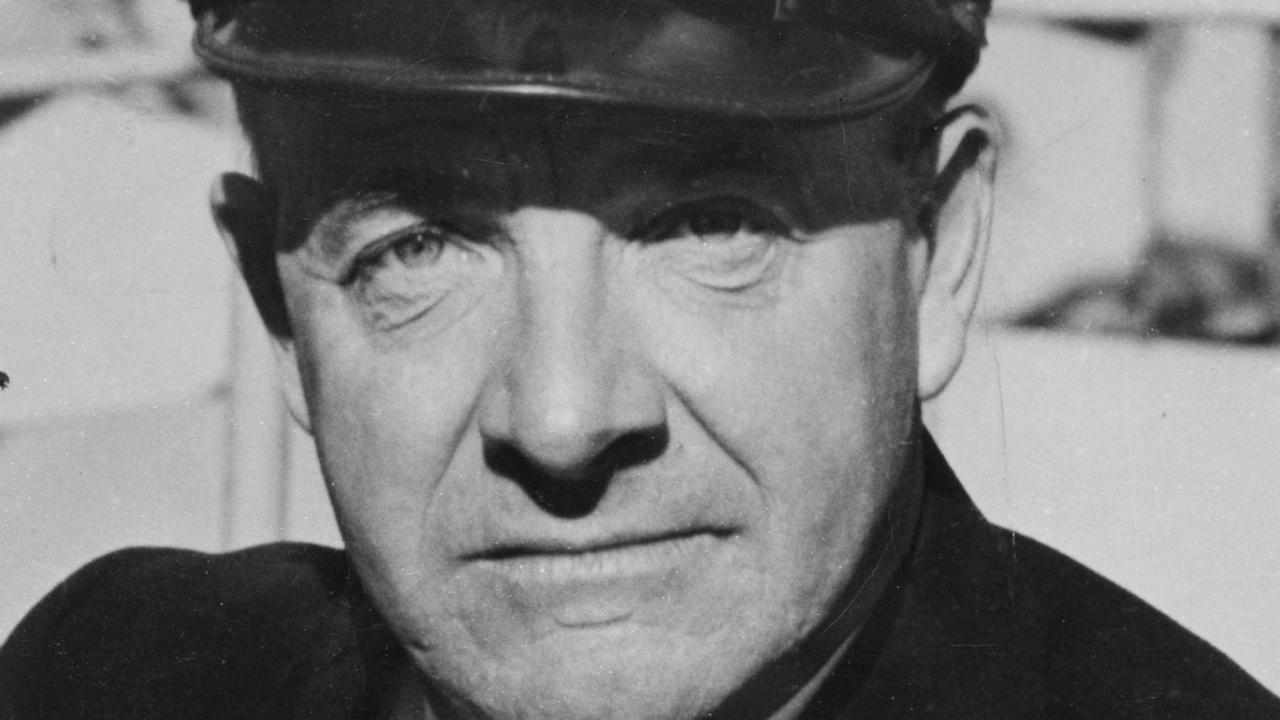Private William Jackson lost an arm but thought only of his mates in mission that won first VC for an Australian on the Western Front
UNDER shells raining out of the midnight darkness of June 25, 1916, Private Willam Jackson ventured into no-man’s land at Bois-Grenier in northern France to rescue his comrades

Today in History
Don't miss out on the headlines from Today in History. Followed categories will be added to My News.
Reckless teen enlisted despite being under age
Spent six weeks at Gallipoli
Lost his arm on first rescue mission of June 25
Searched for half an hour under heavy shelling
IN the midnight darkness of June 25 a century ago, a farm boy ventured into no-man’s land between trenches at Bois-Grenier in northern France to capture German soldiers.
“It was pitch dark,” explained Private John William Alexander “Billy” Jackson a year later. “It suited me. I see well in the dark. They weren’t expecting us, and we got our prisoners all right — four of them. But the Germans got onto us as we were going back.”
Nine men from Jackson’s group immediately went down, although some struggled back to their trenches. After delivering his German prisoner for interrogation, Jackson braved the shelling to rescue wounded comrades.
It was while venturing out for his second rescue that Jackson joined the wounded. “I was coming back with him when a shell burst and blew my right arm off,” he recalled. “A pretty clean job.” As Jackson staggered on with his wounded mate, “I saw the blood spouting but I didn’t feel hurt much — just a numbing sensation.”
After another officer bound the remains of Jackson’s arm in a tourniquet tied with string and a small stick, Jackson returned to the 400m-wide expanse of no man’s land to search for wounded soldiers for another half-hour.
Jackson’s efforts were rewarded with a Victoria Cross for selfless courage under heavy fire while rescuing comrades near Armentieres. Approval of Jackson’s VC, the first awarded to an Australian fighting on the Western Front, was gazetted on September 8, 1916, five days before his 19th birthday.

Born on September 13, 1897 at Glengower station at Gunbar, a flyspeck settlement between One Tree and Booligal, 80km north of Hay in southwestern NSW, he was the fourth child and eldest son of farm labourer John Gale Jackson and his wife Adelaide McFarlane, whose parents owned nearby Seaton Farm. Jackson and his five siblings lived with his grandparents, who had 14 children, after his mother died in 1905.
Remembered as a strong and recklessly daring teen, on February 15, 1915, Jackson quit his job with William Gibson on Carlowrie station to enlist with men from Gunbar’s only four houses. He added a year to his age to enter Liverpool training camp, assigned to B Company of the 17th Battalion. With the 18th, 19th and 20th Battalions it comprised the 5th Infantry Brigade of the AIF 2nd Division.
The 17th sailed from Sydney for Egypt aboard HMAT Themistocles in May, disembarking at Cairo on June 12 to train at Heliopolis, which he described “hot, dirty and nothing but sand”, and the advanced training a good deal harder than Australian training. Jackson landed at Gallipoli on August 20 to fight at Kaiakij Aghala, or Hill 60, but six weeks later was returned to a Cairo military hospital with severe dysentery.

Rejoining his battalion by March 1916, days later it embarked for France as part of the 2nd Division, which took over a forward position near Amentieres on the Western Front in April. When orders were given for as many raids as possible to be carried out on enemy positions between June 20 and 30, 1916, Jackson volunteered as a scout for a party of 40 soldiers, led by Captain Keith Heritage.
On the night of June 25, 1916, they assaulted forward trenches of a Prussian infantry regiment under heavy shelling and machine gun fire to capture four prisoners for interrogation, killing 30 Germans. Ignoring the bombardment on his second rescue mission, Jackson was helping Sergeant Hugh Camden bring in seriously wounded Private Alfred Robinson when a shell blast knocked Camden unconscious, blew off Jackson’s right arm above the elbow, and inflicted further wounds to Robinson, who died 10 days later.
With his first-aid tourniquet to staunch bleeding from his arm and believing Camden and others remained in no man’s land, Jackson continued his search until convinced all wounded Australians had been rescued.

Jackson was sent to England, where the stump of his right arm was removed on June 30. Commander of the 5th Brigade Brigadier-General William Holmes recommended him for a Victoria Cross, praising Jackson’s ability as a scout.
Jackson was also awarded a Distinguished Conduct Medal, officially cancelled on October 21 when he was awarded a Victoria Cross, although Jackson remained unaware of the cancellation because he did not receive Department of Defence notices.

Released from hospital in April 1917, Jackson returned to Australia on the Themistocles, arriving on May 4 with 992 returning wounded servicemen.
On July 5, Jackson was hoisted onto the shoulders of his comrades at the Anzac Buffet and carried to waiting family members.
Jackson worked as a skin dealer, publican and in administration before enlisting for World War II, when he was interrogated in December 1941 for wearing a DCM ribbon. He sailed to England with 34 other Australian VC recipients to the Victoria Cross Centenary celebrations in 1956 and died at Heidleberg, Victoria in 1959.
Originally published as Private William Jackson lost an arm but thought only of his mates in mission that won first VC for an Australian on the Western Front


